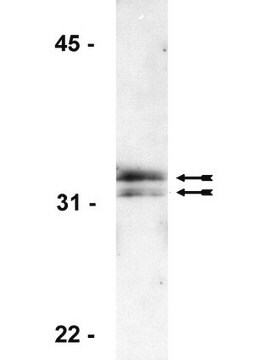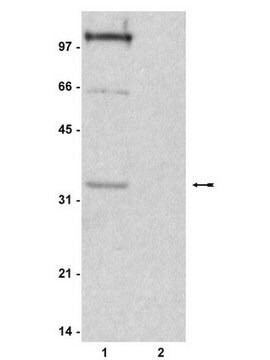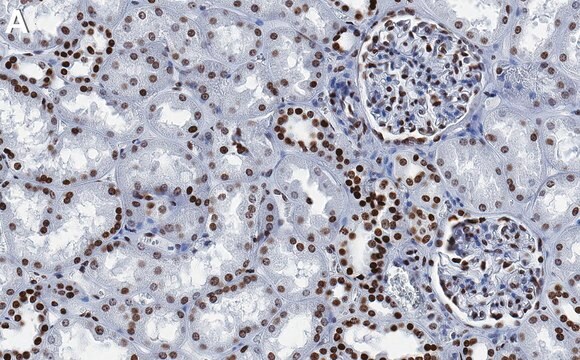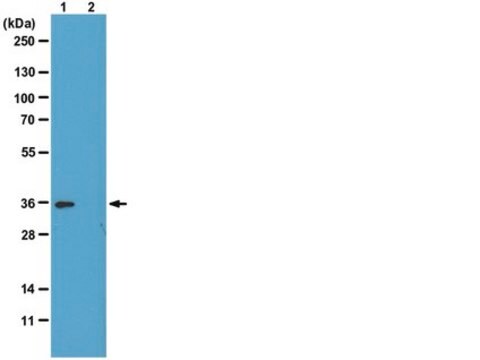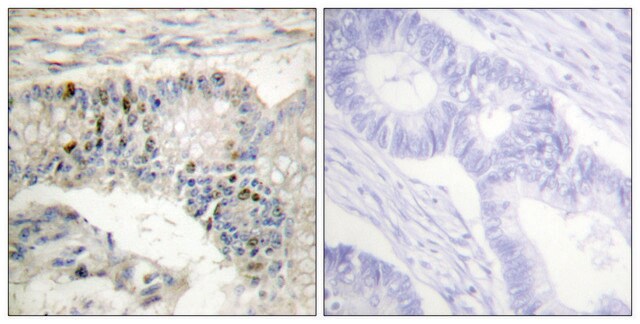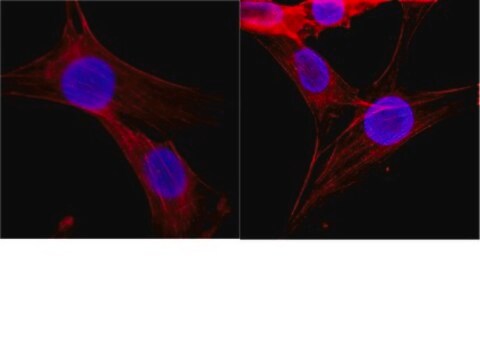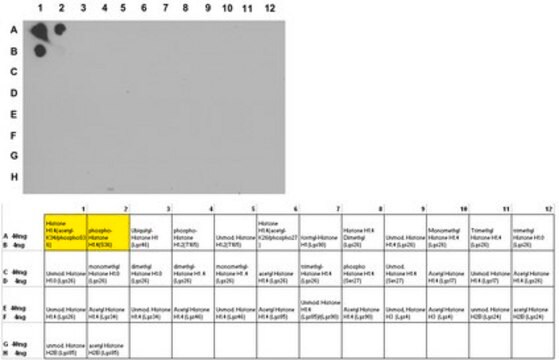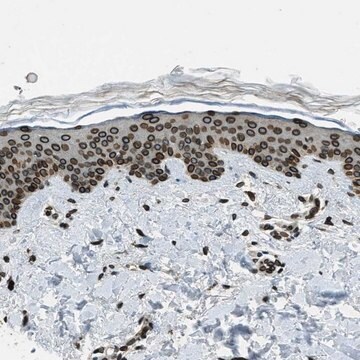MABE446
Anti-Histone H1° Antibody, clone 34
clone 34, from mouse
Sinónimos:
Histone H1.0, Histone H1(0), Histone H1°
About This Item
Productos recomendados
origen biológico
mouse
Nivel de calidad
forma del anticuerpo
purified immunoglobulin
tipo de anticuerpo
primary antibodies
clon
34, monoclonal
reactividad de especies
mouse, bovine, Xenopus, human, rat
reactividad de especies (predicha por homología)
ox (immunogen homology)
técnicas
flow cytometry: suitable
immunocytochemistry: suitable
immunohistochemistry: suitable
western blot: suitable
isotipo
IgG1κ
Nº de acceso NCBI
Nº de acceso UniProt
Condiciones de envío
wet ice
modificación del objetivo postraduccional
unmodified
Información sobre el gen
human ... H1F0(3005)
Descripción general
Especificidad
Inmunógeno
Aplicación
Epigenetics & Nuclear Function
Histones
Immunocytochemistry Analyis: A representative lot from an independent laboratory detected Histone H1° in Xenopus unfertilized eggs and early embryos (Fu, G., et al. (2003). Biol Reprod. 68(5):1569-1576.; Adenot, P. G., et al. (2000). J Cell Sci. 113(Pt 16):2897-2907.).
Immunohistochemistry Analysis: A representative lot from an independent laboratory detected Histone H1° in Xenopus embryo tissues (Grunwald, D., et al. (1995). Exp Cell Res. 218(2):586-595.).
Flow Cytometry Analyisis: A representative lot from an independent laboratory detected Histone H1° in FC (Grunwald, D., et al. (1999). Methods Mol Biol. 119:443-454.).
Calidad
Western Blotting Analysis: 1 µg/mL of this antibody detected Histone H1° in 10 µg of Jurkat cell lysate.
Descripción de destino
Forma física
Almacenamiento y estabilidad
Nota de análisis
Jurkat cell lysate
Otras notas
Cláusula de descargo de responsabilidad
¿No encuentra el producto adecuado?
Pruebe nuestro Herramienta de selección de productos.
Código de clase de almacenamiento
12 - Non Combustible Liquids
Clase de riesgo para el agua (WGK)
WGK 1
Punto de inflamabilidad (°F)
Not applicable
Punto de inflamabilidad (°C)
Not applicable
Certificados de análisis (COA)
Busque Certificados de análisis (COA) introduciendo el número de lote del producto. Los números de lote se encuentran en la etiqueta del producto después de las palabras «Lot» o «Batch»
¿Ya tiene este producto?
Encuentre la documentación para los productos que ha comprado recientemente en la Biblioteca de documentos.
Nuestro equipo de científicos tiene experiencia en todas las áreas de investigación: Ciencias de la vida, Ciencia de los materiales, Síntesis química, Cromatografía, Analítica y muchas otras.
Póngase en contacto con el Servicio técnico

